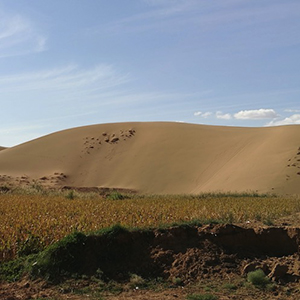Mitigating the impact of soil salinity: recent developments and future strategies

Accepted: 1 December 2022
HTML: 33
All claims expressed in this article are solely those of the authors and do not necessarily represent those of their affiliated organizations, or those of the publisher, the editors and the reviewers. Any product that may be evaluated in this article or claim that may be made by its manufacturer is not guaranteed or endorsed by the publisher.
Soil salinity is among the major abiotic stresses that plants must face, mainly in arid and semiarid regions, and high salinity tolerance is an important agronomic trait to sustain food production. Agricultural soils are unstable and subject to changes in salinity level, and monitoring them at both the local and the regional scale is a relevant activity to adopt soil and water management strategies to decrease salt concentration in the root zone, thus minimizing impacts on plant growth and productivity. Additionally, beneficial soil microorganisms such as arbuscular mycorrhizal fungi and plant-growth-promoting bacteria, particularly when sourced in saline environments, can alleviate plant salinity stress by multiple mechanisms. In this review, some interventions aimed at reducing soil salinity will be discussed, as well as interventions aimed at reducing the vulnerability of crops to saline stress to obtain more tolerant plants.
How to Cite

This work is licensed under a Creative Commons Attribution-NonCommercial 4.0 International License.
PAGEPress has chosen to apply the Creative Commons Attribution NonCommercial 4.0 International License (CC BY-NC 4.0) to all manuscripts to be published.

 https://doi.org/10.4081/ija.2023.2173
https://doi.org/10.4081/ija.2023.2173







